投稿日:
更新日:
ShinshuEat meat from it! Part 1
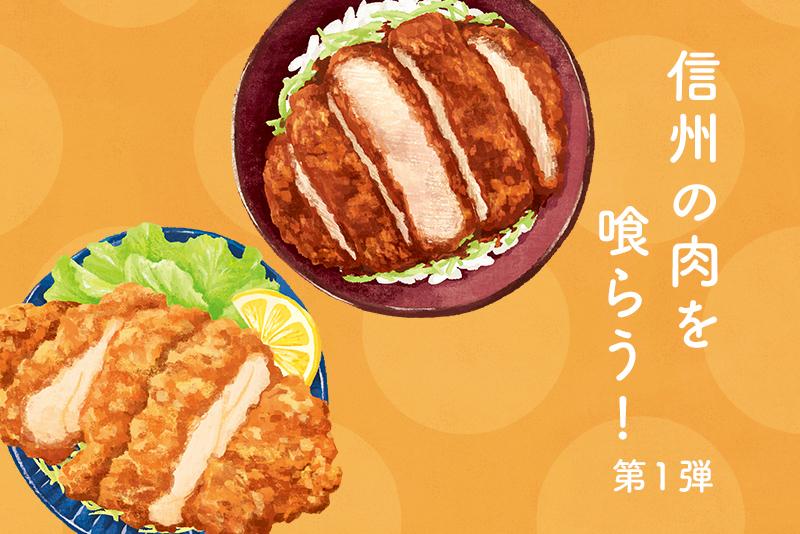
Diverse food cultures have been cultivated in each region Nagano prefecture.ShinshuSoba and oyaki are typical examples, but the meat culture that is rooted in various places is also very diverse. There "ShinshuWe will deliver a special feature titled "Eat meat from the meat" in two parts.
Vol.1 The appearance, name, and taste! "Bandits' Yaki" is a huge impact
Vol.2 The sauce and cabbage are the key points! "Komagane Sauce Katsudon"
Vol.1 Looks, name, and taste! "Bandits' Yaki" is a huge impact
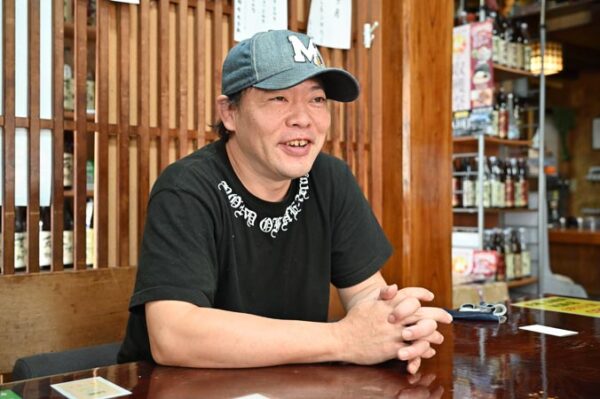
Boys
Takami Naotaka, the third owner
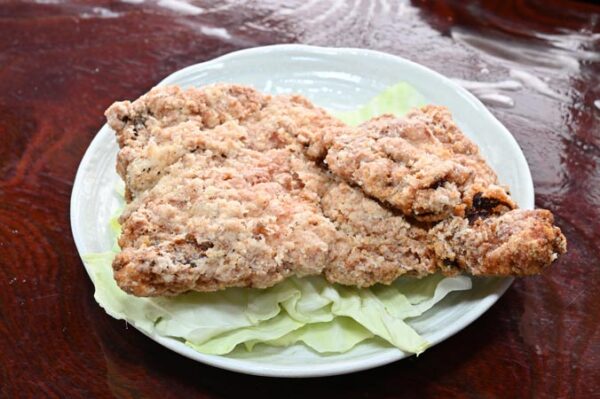
"Yanchoyaki" has developed mainly in Shiojiri and Matsumoto City, and is now available in restaurants and izakayas throughout the prefecture, as well as in the prepared food sections of supermarkets and convenience stores. This is a delicious dish made by marinating a piece of chicken in a garlic-rich soy sauce sauce, sprinkling it with potato starch and fried.
Its crispy, juicy texture and appetizing garlic aroma are attractive, and it goes well with both rice and alcohol, and is now widely loved by the prefecture's residents.
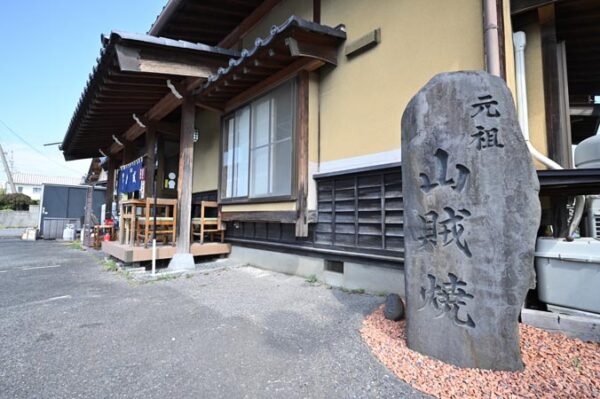
Yamabori is located about a 5-minute walk from JR Shiojiri Station. A stone monument for "Original Sandwich Yaki" stands in front of the shop.
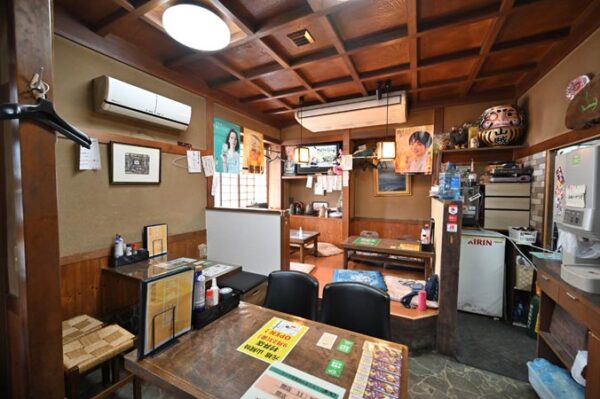
The atmosphere of an old-fashioned izakaya is exuded, and many customers from outside the prefecture visit the area in search of the taste of "barriens."
The birthplace of this restaurant is Yamatobi, an izakaya in Shiojiri City, where the stone monument for the original Yamatobiyaki stands. It is said that the grandparents of the current store owner, the third generation Takami Naotaka, came up with the idea about 70 years ago.
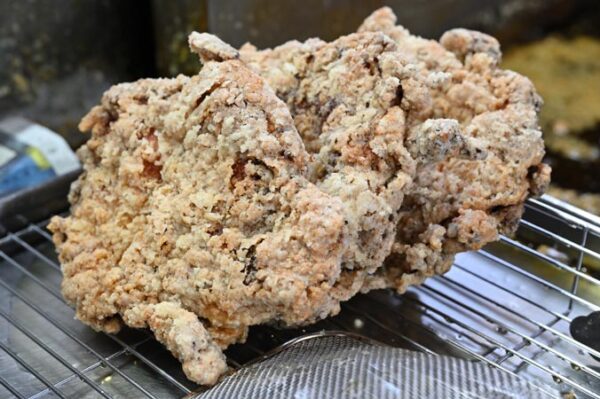
"G-Pai" is a classic Taiwanese gourmet food made by deep frying a whole piece of chicken, and it certainly looks exactly like the look of a yamadanyaki yaki.

The secret sauce, which continues the Chinese genealogy, is that it uses garlic, which is said to be 10 times more than normal fried chicken. Uses onions, soy sauce, sake, mirin, and no ginger
Although no accurate records are left, Takami's relatives say that his grandparents, who had been running a restaurant called Matsumoto Shokudo before the war, created a hint of the chicken dishes eaten by Chinese veterans in the same area. Takami says that its roots may be Taiwanese street food "Gi-pie."
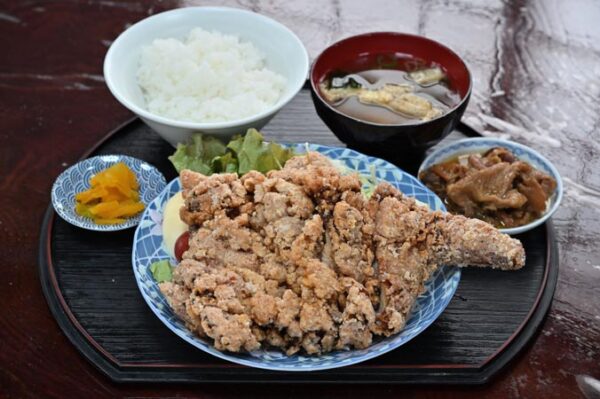
Even in medium size, this volume! Other options include mini, large and extra large
The menu name "Yamazuiyaki" was also devised by my grandparents. My grandfather originally ran a livestock dealer known as Bakuro, and since he went to local farms to purchase and prepare chickens, he served them with hearty bone-in chicken.
It is said that the dish was "names you'll never forget once you hear them," and that the wild look of his grandfather, who looked like a bandit, was made into "Yamazoriyaki."
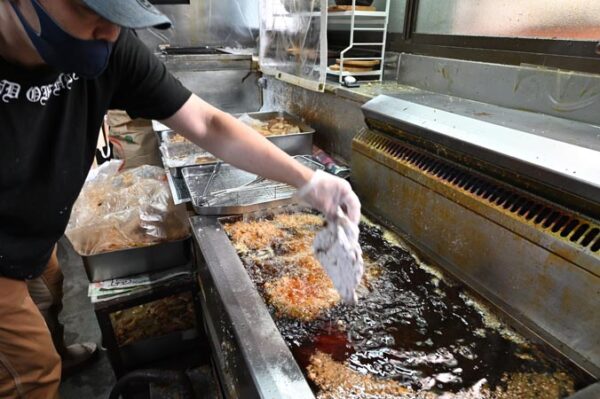
Sprinkle generously with potato starch and deep fry in high-temperature oil to create a unique texture.
"The fact that they fried them is the unique naming sense of my grandparents who wanted to give them a menu name that interests them.
It's not uncommon to have a slightly unusual menu name these days, but I think it was the foresight and strategy that I had at the time that I had that sensibility and it was my grandparents' foresight. I guess it made him popular because of this name," says Takami.
As the words say, "Yanchouyaki" was a huge hit, combined with its deliciousness. Apparently the store was changed to the current "Bandits."
Gradually, more and more restaurants are offering it in the surrounding area, and it has become a popular local gourmet food. Since the 2000s, when B-grade gourmet food began to become a hot topic in various places, it has become known both within and outside the prefecture.
As Takami's origins, we are still particular about serving bone-in dishes. The manufacturing process has not changed much since my grandparents' generation.
"I hope that more people will visit the area in search of grilled yamagiri. This has not changed since my grandparents were my grandparents," he says of his love.

Boys
Address: 10-1 Omon Shichibancho, Shiojiri City
phone:0263-52-0743
Vol.2 The sauce and cabbage are the key points! "Komagane Sauce Katsudon"
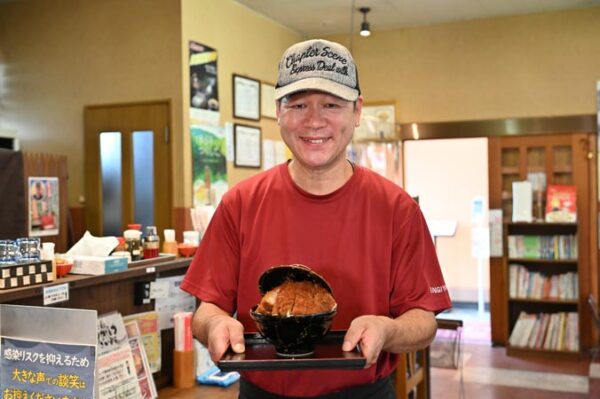
Komagane Sauce Katsudon Club
Chairman Arai Kojiro
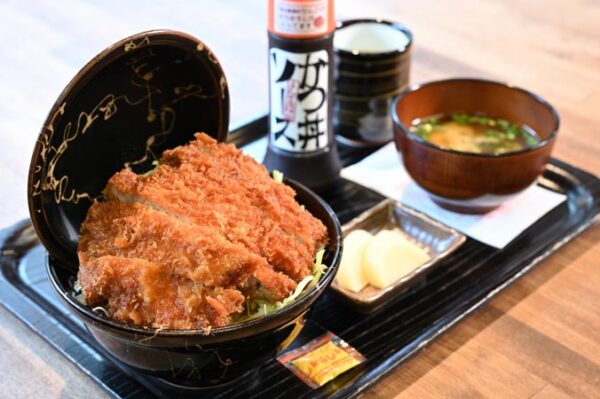
Katsudon is loved all over Japan, and is loved by the common people as a national dish.
Egg-sticking is common,Komagane CityThe familiar "sauce cutlet bowl" is made by mixing freshly fried thick slices of tonkatsu with sweet and spicy sauce and spreading shredded cabbage. It is also a staple local gourmet food that many tourists visit in search of this flavor.

The city was first served in the early Showa period when a sauce-filled cutlet bowl was first served. There is an anecdote that the owner of the cafe "Kiraku," a foodie, saw Western food such as curry, cutlets, and omelettes, which were beginning to flourish at the time, and came up with stewed cutlets as hints.
The cutlet bowl became popular, and at the time there was a factory in Ina Valley, which made Japan's first sauce, and since sauces were familiar to this area, it is said that sauce cutlet bowls gradually became popular as home cooking.
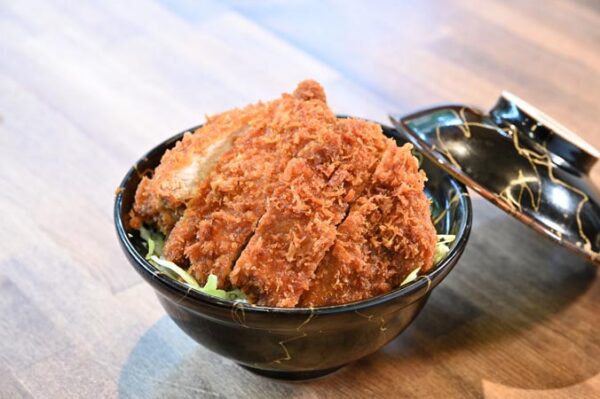
The golden rule is to serve it in a rice bowl rather than in a teal. It is recommended to place the overflowing cutlet on the lid and enjoy it with the rice below.
However, there was a hidden effort before it became known both within and outside the prefecture.
A rich natural setting surrounded by two alpsKomagane CityHowever, when the Heisei era began, the bubble economy collapsed and regional competition intensified. The Chamber of Commerce and Industry invited regional revitalization experts from outside the city to hold a study group to revitalize the town using local resources that the local community has cultivated.
At that time, when an expert saw the "sauce cutlet bowl" served during lunch, he was surprised by the unexpectedly-looking dish he had never had before, and was convinced that "it is a potential ingredient that could spark the revitalization of the region!"
Even experts who traveled around the country found this sauce katsudon to be rare. The meal was so commonplace for locals that it was difficult to get the restaurant's approval at first, but with careful explanations from the experts and the Chamber of Commerce, an understanding of its uniqueness and possibilities gradually became widespread.
Thus, in 1993, restaurants serving sauce-katsudon rice bowls participated and the Komagane Sauce-katsudon rice bowls were launched. Using its unique food culture as a starting point, an initiative has begun to spread the charm of the town.
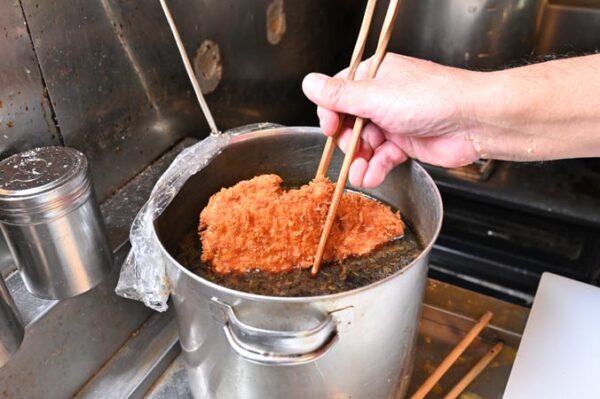
When dipping freshly fried cutlet into sauce, one of the nine points is to keep the sauce warm.
What we particularly worked hard to create recipes that are the basics of delicious sauce, which are the key to the flavor. We have developed commercially available products by consigning brewing in a local miso storehouse. Furthermore, in order to ensure uniform quality, we have established nine rules, such as "the basic meat is pork loin and over 120g" and "No vegetables other than cabbage can be placed on it."
This made it apart from the sauce cutlet bowls that are passed down in Kofu City, Yamanashi Prefecture, Kiryu City, Gunma Prefecture, Aizuwakamatsu City, Fukushima Prefecture, and Fukui Prefecture.
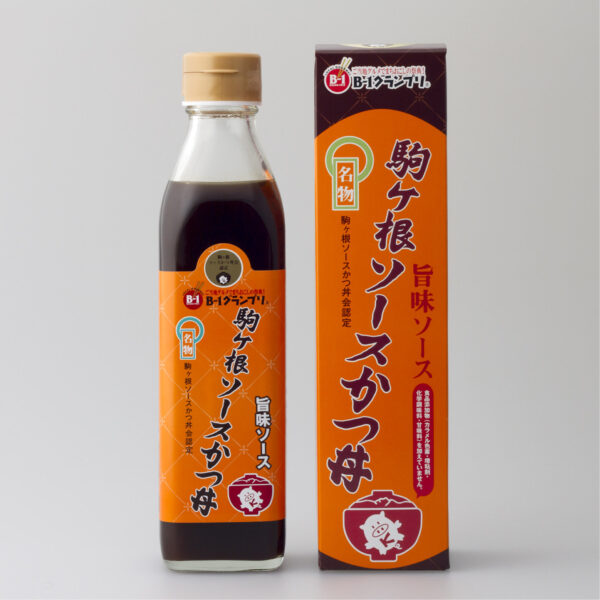
The special flavored sauce made at the event is also available on the market.
Since then, it has also gained national popularity, winning the "B-1 Grand Prix," a local gourmet festival.
For the 15th anniversary, it will be sold as a commercial sauce.Komagane CityWe have renewed the delicious taste using Honjozo soy sauce made from Ina soy sauce, which is produced inside.
On the 25th anniversary, we are engaged in a variety of activities, including planning a festival that collects sauce cutlet bowls from all over the country.

The proof of the member's shop is a fried (orange) flag. "Katsu" is written in hiragana in the official form.
In addition, the company is also implementing local initiatives, such as distributing discount coupons to participants at local marathon events, using them as a return gift for hometown tax donations, and distributing discount coupons for katsudon from restaurants belonging to the Komagane Sauce Katsudon Club, which are affiliated with the Komagane Sauce Katsudon Club, which means "eating katsudon and winning the exam," to local applicants.
In 2015, the company was able to expand nationwide by making it a limited-time menu at Hottomo, a chain store specializing in take-out bento boxes.
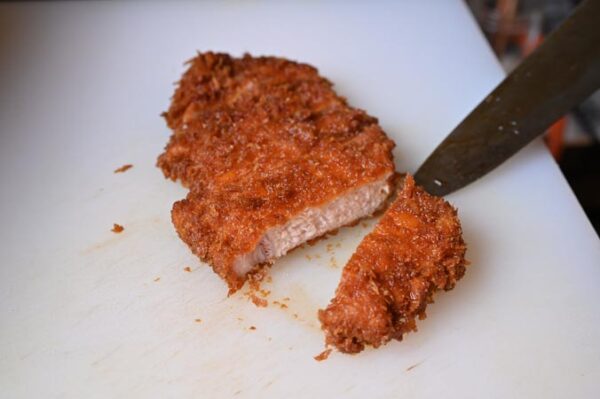
The thick cut cross section stimulates appetite
Currently, the fifth president of the Komagane Sauce Katsudon Club, which has 34 stores, is Arai Kojiro, who runs two stores, including the ramen restaurant Engiya.
Among the set menus such as gyoza, fried chicken, and char siu rice bowl, the ramen and sauce katsudon are the most popular sets at Engiya.
The key to the sauce that Arai makes is to use the flavor of the sauce set by the association, and at Arai's shop, the key is to add grated apples. The cutlet is served in a volume of 180-200g.

Komagane City"Engiya" moved from to Miyata Village. Arai is anotherKomagane CityWe also run a ramen restaurant inside.
"The appeal of sauce cutlet bowls is that they can be served in both Japanese, Western and Chinese cuisine.Komagane CityYou can also see tourists strolling through the shops inside. On the other hand, the association has been working hard to cook without disappointing the customers' expectations. We will cherish the weight of the history our seniors have built up, and we hope to continue to contribute to revitalizing the local food."
Arai says this. Next year marks the 30th anniversary of the Komagane Sauce Katsudon Club's launch, and we will continue to look forward to the development of the group, which is still developing!

Oki Engiya Co., Ltd.
Address: 4830-1 Miyata Village, Kamiina District
phone:0265-96-0403
*This article is information as of December 2022. Please note that the products we carry may have changed.















